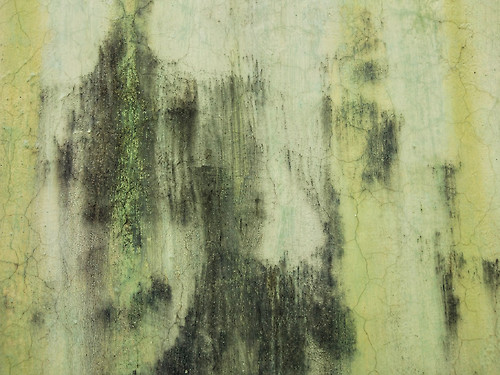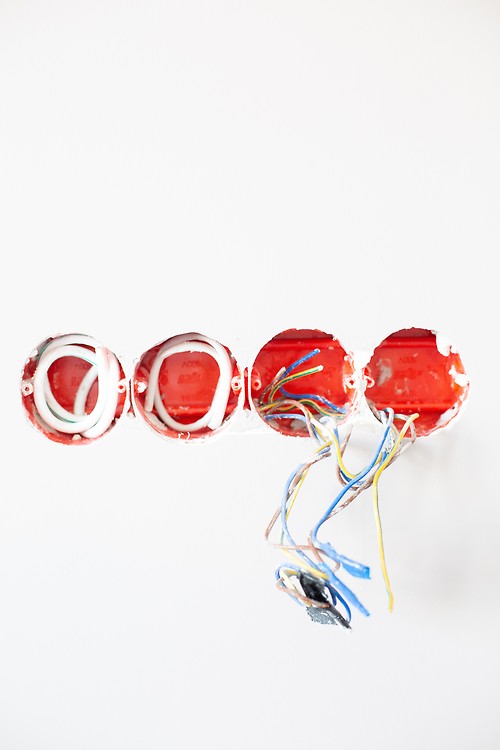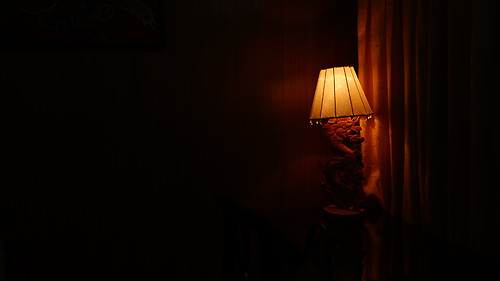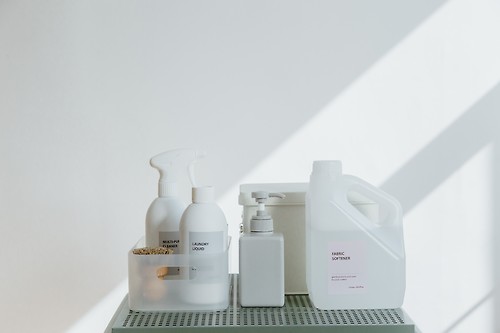Mens sana in domus sana
Damien Schneider,Just as we need to take care of our natural environment, it is important to pay attention to our built and indoor environment in order to avoid contaminating it and putting our health at risk.
Without claiming to be exhaustive, here are some potential sources of pollution in our homes.
Mould

Cause
Mould can appear in our homes when the humidity level is too high. The two main causes of this phenomenon are insufficient air renewal and water infiltration.
In the first case, human activities (breathing, cooking, showering, etc.) in the house create water vapour and, as the air is not sufficiently renewed, the water vapour content of the air increases and then saturates. This results in condensation on the walls (often the coldest part of the room). This condensate is conducive to the development of mould. Particular care should be taken when renovating old buildings that were not insulated as this can change the water regime of the house.
In the second case, faults in the building envelope (or in a pipe) allow water to enter the building. This may be a crack in the facade plaster, a missing tile on the roof, etc. This encourages mould growth.
Health
The larger the mouldy surfaces, the greater the health risk. Mould can cause skin, respiratory and eye irritation. Prolonged exposure can lead to allergies, bronchitis or asthma2.
Solutions
Temporary drying measures with dehumidifiers can be implemented to improve the situation. However, the cause of the problem must also be addressed. Ventilation should be improved, either by regular manual intervention or by installing mechanical ventilation, depending on the case. In the case of water infiltration, the weakness will have to be identified and corrected. As each situation is different, so are the solutions.
Volatile Organic Compounds (VOCs)

Cause
Different building materials can emit volatile organic compounds into the indoor air. These can be of natural origin, as in the case of wood, or man-made, as in the case of solvents in some paints.
New furniture, cleaning products, room fragrances, etc. can also be sources of volatile organic compounds.
Some known VOCs: butane, propane, ethanol (90° alcohol), acetone, benzene, perchloroethylene, formaldehyde.
Health
VOCs can cause skin reactions, respiratory problems, headaches and fatigue. According to the Swiss Lung League, benzene, one of the most common VOCs, can cause leukaemia.
Solutions
When planning, building and moving in, special care should be taken to limit the amount of problematic materials and products in indoor spaces.
In the case of indoor air with abnormal VOC content, regular ventilation is recommended. Periodic ventilation with windows wide open for 5 minutes is recommended to allow for good air exchange. A permanently open transom window does not allow for thorough air renewal.
There are also examples where air quality has been improved by introducing sheep's wool as a collector element3.
Contrary to popular belief, houseplants do not have a significant air purification effect. They do so at such a slow rate that it will always be more efficient to open the window4. On the other hand, we find that plants are excellent for morale, so why deprive yourself of them?
Electromagnetic fields

Cause
To simplify the phenomenon, we can say that the movement of an electric current along a cable or in a device creates a magnetic field. The higher the voltage, the stronger the field. This is usually an unavoidable effect of using an appliance, but sometimes it is a purpose in itself, as in the case of an antenna.
Power lines in the house, plugs, outdoor power lines, wifi hotspots, mobile phones, microwave ovens, etc. are all sources of magnetic fields.
Health
Some people who are more sensitive to these phenomena may be strongly affected. This can lead to sleep disturbances and severe fatigue.
Solutions
As a general rule, thick walls provide better protection against radiation. In the case of new buildings, shielded electrical cables can also be used to reduce electromagnetic radiation. The number of electrical appliances in the house should also be reduced to a minimum.
These measures are difficult to implement in an existing house without major interventions (apart from reducing the number of appliances). Moving out is often the only possible solution for those affected.
Asbestos, lead, PCB, etc.

Cause
Asbestos was mainly used in adhesives, insulation and fibre cement boards. All buildings built or renovated before 1990 are likely to contain asbestos5.
Lead was frequently used in construction and mainly in paints, sewage pipes and some roofing. A significant proportion of buildings constructed or renovated before 2006 may contain this pollutant6.
PCBs (polychlorinated biphenyls) could mainly be found in capacitor insulation, varnishes, gaskets, adhesives and some plastics. They are persistent organic pollutants that are degraded very slowly and accumulate in the environment. They have become ubiquitous and are gradually being ingested through food. Their use was completely banned in 19867.
Health
Asbestos is only really dangerous when it is emitted in the form of airborne particles. The fibres emitted in this way are carcinogenic. It is therefore important to avoid damaging or piercing it. The presence of asbestos can be suspected by experience, but only laboratory tests can detect it.
Lead has toxic effects on the nervous and reproductive systems. Only laboratory tests can ascertain whether or not lead is present in suspected items.
PCBs accumulate progressively in the body, mainly in fatty tissue and the liver, and can create a series of disorders. Their elimination takes several years (about 7 years). PCBs can also be transmitted through breast milk.
Solutions
Today's building materials should not contain lead, asbestos or PCBs. This is therefore no longer a problem in new construction. In the case of an existing building, however, this legacy presents a risk. It is therefore recommended (mandatory in the case of renovation) to have the presence of these components checked in the house. In case of confirmed presence and depending on the necessity (risk of contamination), a decontamination can be undertaken by specialised companies.
Insufficient lighting

Cause
Insufficient daylight can be caused by windows that are too small, obstacles in the path of light or rooms that are too deep.
Illumination problems can also be caused by insufficient or underpowered artificial lighting. Intermittent light (flickering) is also a major source of discomfort.
The opposite effect can also occur: too much light can dazzle the occupants. This is particularly problematic when working with a computer screen and the reflections that can be created.
Health
Although scientists believe that lighting that is inappropriate for the intended use of the space can cause fatigue, no long-term damaging effects have been found8. Of course this does not apply to extremes, so do not try to do arc welding without protection.
Insufficient lighting in traffic areas can also be a source of accidents. Indeed, it is more likely to trip on a dark staircase than in a well-lit space.
Solutions
In new buildings or conversions, particular care should be taken to ensure that there is sufficient natural light.
If constructive measures are not / no longer possible, then artificial lighting should be increased or reinforced.
Carbon monoxide

Cause
Carbon monoxide can be released during incomplete combustion of a fuel (wood, gas, oil, etc.). Combustion is not complete when there is not enough oxygen in the reaction. If the fumes are not efficiently extracted, there is a risk that carbon monoxide will spread throughout the building. This gas has the same density as air and can spread rapidly throughout the indoor space9.
Health
Odourless, colourless, tasteless and non-irritating, this gas is particularly sneaky. Carbon monoxide causes drowsiness in people who breathe it. If the level is too high, it can lead to death by asphyxiation. This is because carbon monoxide binds irreversibly to haemoglobin and prevents the transport of oxygen through blood10.
Solutions
Regular sweeping and inspection of combustion installations is important to avoid danger.
If an abnormal presence of carbon monoxide is detected in a space (general drowsiness, tiredness at unusual times, etc.), a chimney sweep should be called in to ensure that the chimney draught is adequate. In the case of a boiler, the technical service should check and repair it.
There are also carbon monoxide detectors to alert the occupants of the building in case of a problem.
Cleaning products

Cause
When we talk about healthy living, we mostly think of the materials and other constructional measures that need to be taken. However, the use phase is also very important. Care must be taken not to introduce products that are harmful. A major source of pollution at this stage are cleaning products, room fragrances, insecticides, etc., not only because of the emission of VOCs, but also because of their potentially aggressive nature for the skin or the eyes.
Care should also be taken not to create dangerous chemical reactions by mixing different products. For example, mixing bleach with decalcifying vinegar emits chlorine. Many deaths have been linked to this type of outgassing11.
Health
Cleaning products can be harmful to the skin, respiratory tract, eyes, etc. Some products are also suspected of being endocrine disruptors or carcinogens. Many of them are also harmful to the environment and to animals (wild and pet), both during use and after. Finally, some products are very dangerous for water.
Solutions
Supermarkets sell products that respect the environment and your health. (Beware that these products may still be aggressive).
There are many natural alternatives to "classic" cleaning products. White vinegar, for example, is an excellent scale remover, 100% biodegradable and does not accumulate in the environment.
Allergens

Cause
Some materials can cause allergies or promote the development of other sources of allergy. Since allergies are many and varied, it is not possible to list all the causes. It is estimated that 15-20% of people in Switzerland are subject to allergies12.
Paints, depending on their composition, can be problematic for a certain segment of the population. Some fabrics are excellent living areas for dust mites, which can also trigger strong reactions in sensitive people.
Health
An allergy is a "disproportionate" reaction to the presence of a foreign body, for example on the skin. The symptoms can be mild (e.g. local redness) or severe (e.g. swelling). In some cases and without timely appropriate treatment, some reactions can cause death.
Solutions
The most effective solution is to remove the problematic materials from your environment.
When designing your project, do not hesitate to talk about your possible allergies so that they can be taken into account at the design stage.
Conclusion
Healthy living and clean air are not a matter of course. Special care must be taken during design, implementation and use.